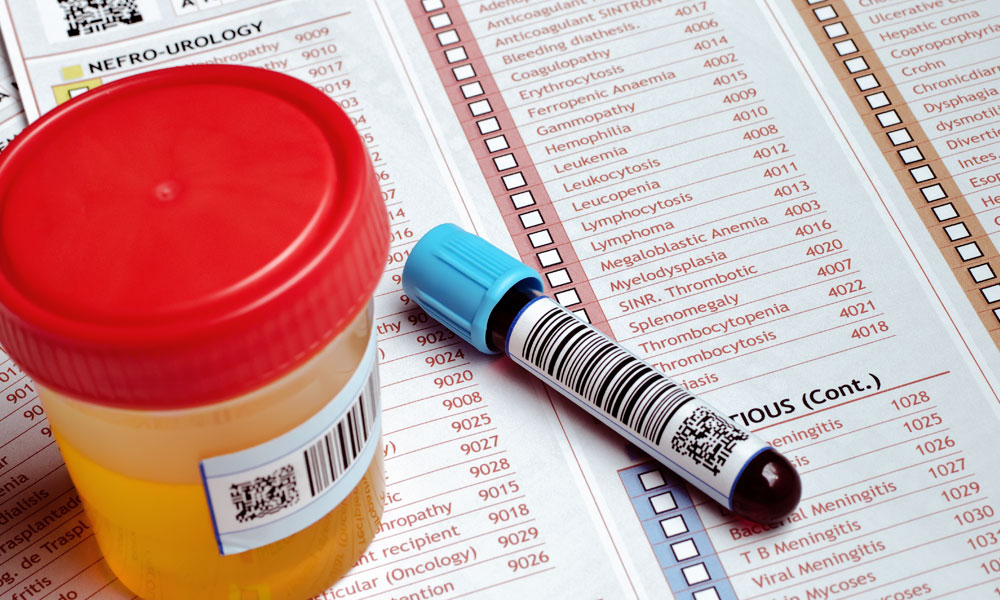Why do I have critically low CBC, abnormal chemistry, and/or abnormal coagulation results for my patients? Why is the drug level is very high? Why do the results fluctuate and do not correlate with the patient’s condition?
These are some of the questions we are frequently asked when it comes to specimens collected from Peripherally Inserted Central Catheters (PICC line). With an increase in the prevalence of PICC lines, we have noticed a corresponding increase in erroneous values as a result of compromised samples. Seeing critical hemoglobin due to diluted sample is not uncommon if the first sample to draw was the lavender or critical chemistry if the serum or plasma sample was drawn first.
Here are few tips for successful PICC line blood collection:
You can use either CDC recommendation, CLSI, or your facility protocol
CDC recommendation:
- Access the catheter following facility guidelines, maintaining aseptic technique
- Remove the first 3-5 mL of blood and discard
- Obtain specimen, follow the order of draw
- Flush with 10-20 mL of normal saline (clamping the catheter as flushing is completed, if necessary) and promptly dispose of the used syringe(s)
- Perform hand hygiene when done
Clinical and Laboratory Standard Institute (CLSI) recommendation:
- Completely turn off all infusion and blood products
- Flush the vascular access device (VAD) with 5-10 mL preservative-free 0.9% sodium chloride, using the most massive available VAD lumen, or follow facility and manufacturer’s guideline.
- Withdraw a discard amount equal to two times the dead-space volume for noncoagulation testing.
- When drawing coagulation studies from a catheter lumen in which anticoagulation therapy had been infusing, you need to withdraw six times the dead-space volume. Obtain the specimen.
- Follow the order of draw if you are collecting directly into tubes. Safety transferring devices must be available for transferring from a syringe into a blood collection tube.
- A needle MUST NOT be used to transfer from a syringe.
- Flush the VAD with 5-10 mL of preservative-free 0.9% sodium chloride or follow facility and manufacturer’s guidelines.
- Perform hand hygiene when done
Several steps are recommended to reduce problems when collecting from VAD:
- Venipuncture must never be attempted above a PICC line insertion.
- Follow the CLSI guideline for the order of draw:
- Blood culture
- Sodium citrate for Coagulation (blue tube)
- Serum (red tube)
- Heparin (green tube)
- EDTA (lavender tube)
- Glycolytic inhibitor (gray top)
- Blood cultures collected from VAD are associated with greater contamination rate than blood culture collected via venipuncture. It is recommended if blood culture is collected from VAD to be paired with a second culture obtained from venipuncture to rule out contamination for positive results.
- Withdrawing a discarded volume can help reduce problems with fluid or medication contaminated specimens.
- As a general guideline, 5 mL of blood may be sufficient discard volume for the majority of central lines; however, some central lines require up to 11 mL as a discarded volume.
- If a specimen is collected for drug levels, the specimen must be collected from a catheter lumen not being used for infusion of the same drug.
- Specimens intended for coagulation testing should not be collected with the same VAD lumen in which anticoagulant medications had been infusing or where heparin has been used to maintain line patency. If a sample is drawn without following this recommendation and the result is elevated, a confirmation of the result with peripheral venipuncture is recommended before changing the medication.
Steps to avoid hemolysis:
- Permit antiseptic to dry completely
- If a syringe is used, avoid pushing on the plunger to increase blood flow, you should angle the syringe to permit blood flow to the downside of the tube via vacuum
- Follow the CLSI guideline for the order of draw.
- Avoid mixing the specimen vigorously
Always make a notation in the patient record and requisition that the specimen was collected from VAC or PICC line.
References:
- Clinical and Laboratory Standards Institute. (CLSI). GP41, 7th edition 2017
- M. A. Halm, M. Gleaves. OBTAINING BLOOD SAMPLES FROM PERIPHERAL INTRAVENOUS CATHETERS: BEST PRACTICE?. American Journal of Critical-Care. 2009, vol. 18. No 5: 474-478. http://ajcc.aacnjournals.org/content/18/5/474.full.pdf+html
- Infusing nursing standards of practice. J Infus Nurs. 2011;34 (Suppl 1): S1-S110
- G. Lippi, G. Cervellin, C. Mattiuzzi. Critical review and meta-analysis of spurious hemolysis in blood samples collected from intravenous catheters. Biochem Medica. 2013. 23(2): 193-200
- RJ Everts, EN Winson, PO Adholla, BL Reller. Contamination of catheter-drawn blood culture. J. Clin Microbiol. 2001; 39 (9): 3393-3394
- JM Powers. Obtaining blood samples for coagulation studies from normal saline lock. Am. J Crit Care 1999; 8 (4):250-253
- https://www.cdc.gov/hai/settings/outpatient/basic-infection-control-prevention-plan-2011/index.html


Leave A Comment
You must be logged in to post a comment.